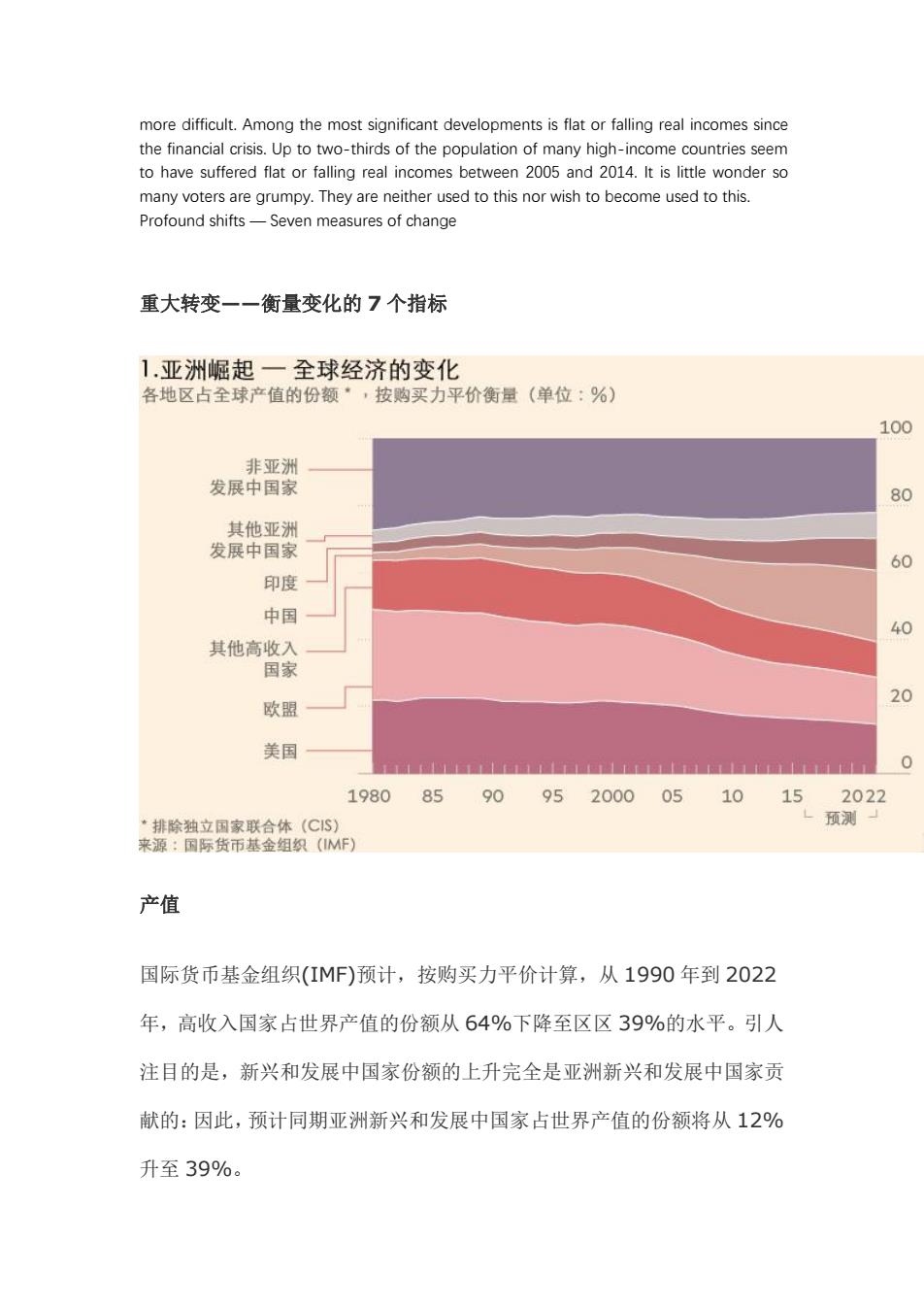正在加载图片...

more difficult.Among the most significant developments is flat or falling real incomes since the financial crisis.Up to two-thirds of the population of many high-income countries seem to have suffered flat or falling real incomes between 2005 and 2014.It is little wonder so many voters are grumpy.They are neither used to this nor wish to become used to this. Profound shifts-Seven measures of change 重大转变一一衡量变化的7个指标 1.亚洲崛起一全球经济的变化 各地区占全球产值的份额·,按购买力平价衡量(单位:%) 100 非亚洲 发展中国家 80 其他亚洲 发展中国家 60 印度 中国 40 其他高收入 国家 20 欧盟 美国 LLL1上LL1 0 1980 85 909520000510 152022 ·排除独立国家联合体(CS) 预测一 来源:国际货币基金组织(MF) 产值 国际货币基金组织(IMF)预计,按购买力平价计算,从1990年到2022 年,高收入国家占世界产值的份额从64%下降至区区39%的水平。引人 注目的是,新兴和发展中国家份额的上升完全是亚洲新兴和发展中国家贡 献的:因此,预计同期亚洲新兴和发展中国家占世界产值的份额将从12% 升至39%。more difficult. Among the most significant developments is flat or falling real incomes since the financial crisis. Up to two-thirds of the population of many high-income countries seem to have suffered flat or falling real incomes between 2005 and 2014. It is little wonder so many voters are grumpy. They are neither used to this nor wish to become used to this. Profound shifts — Seven measures of change 重大转变——衡量变化的 7 个指标 产值 国际货币基金组织(IMF)预计,按购买力平价计算,从 1990 年到 2022 年,高收入国家占世界产值的份额从 64%下降至区区 39%的水平。引人 注目的是,新兴和发展中国家份额的上升完全是亚洲新兴和发展中国家贡 献的:因此,预计同期亚洲新兴和发展中国家占世界产值的份额将从 12% 升至 39%